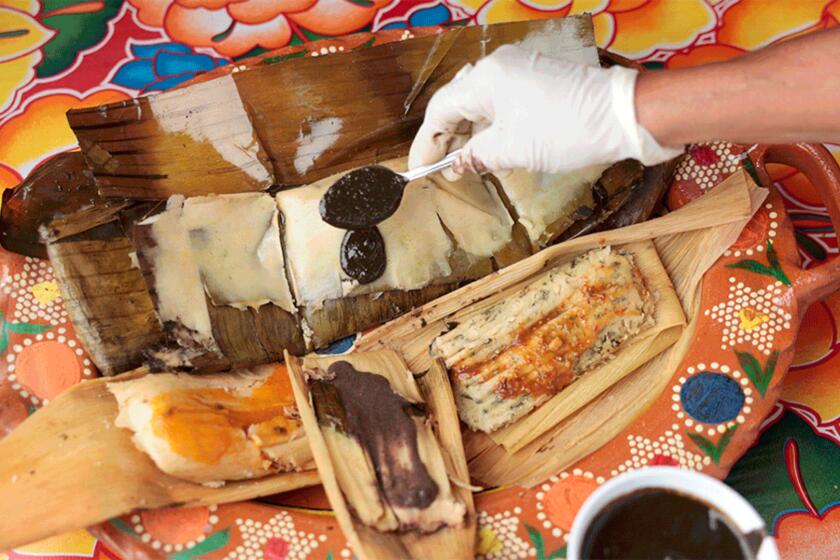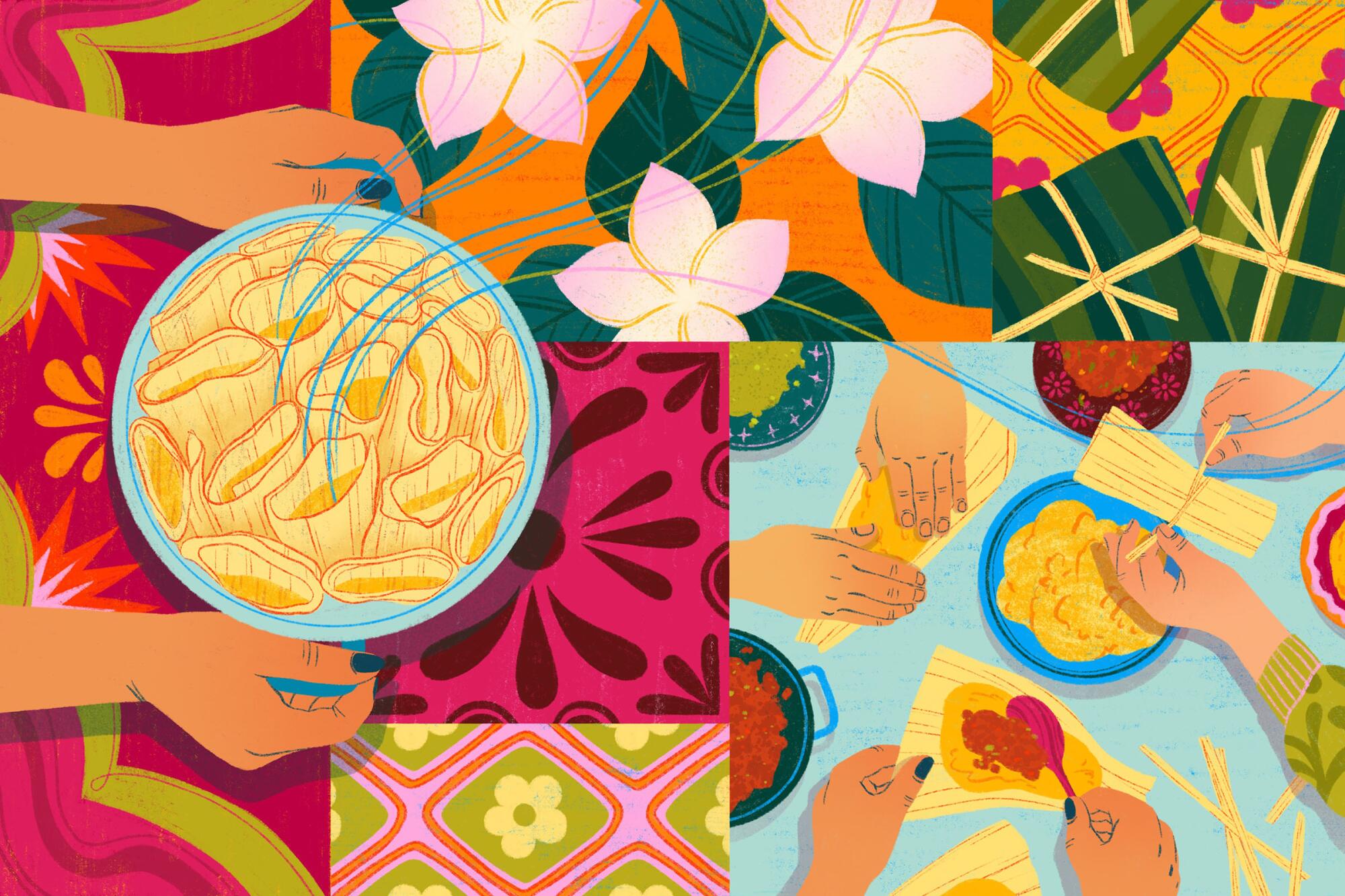
“These are likely the last tamales I will ever make,” my aunt and godmother Vicky says as she hands me bags filled with four varieties.
This may not be a heartfelt prediction: In fact, Tia Vicky has made this announcement every year for the last 15 years. Still, she is 82, and her voice is raspy from health challenges.
I unpack the bounty: pork in red sauce with potato; rajas (made with strips of pasilla chile, cotija cheese and tomatillo salsa verde); chicken cooked in tomato sauce and onion, and jalapeño and olives; and sweet tamales studded with shredded coconut, pineapple, raisins and sugar.
How could this ever end or even change?
These tamales are the heartstrings that keep my cousins, our children, now second, third and fourth generation, and me connected to our ancestral home in Nayarit, Mexico — our culinary through-line to a homeland we are not from.
Made from masa, a dough crafted from maize, tamales represent not just Mexican cuisine but our Mexican identity too. We are “gente de maiz” — people of the corn.
The best tamales span regional Mexican, Salvadoran, Belizean, Guatemalan styles and more. Get your orders in ahead of Christmas and December holidays.
Each year, my family reaffirms this in the week leading up to Christmas, when we gather in my Tia Vicky’s kitchen — my mom, our neighbor Angela and whatever other cousins, friends and grandkids can be rounded up — to make tamales for the holiday. Our fun and festive time together is about making the tamales, but it’s also about being in bola, together.
This is the tamalada. I show up on my way home from work at USC, my cousin Karla comes to pick up her boys after work, and we sit around the table to laugh and chismear (gossip) — and drink Pinot Noir.
The kitchen feels smaller than it is because my aunt’s table takes up three-quarters of the space. The table is beautiful — made of heavy black lacquered wood with a sun and moon motif — but it’s more appropriate for a Mexican hacienda than a modest home. About 25 years ago, my aunt saw it on a telenovela, and when she spotted the same table at a furniture store, she snatched it up. It’s like being on a stage set.
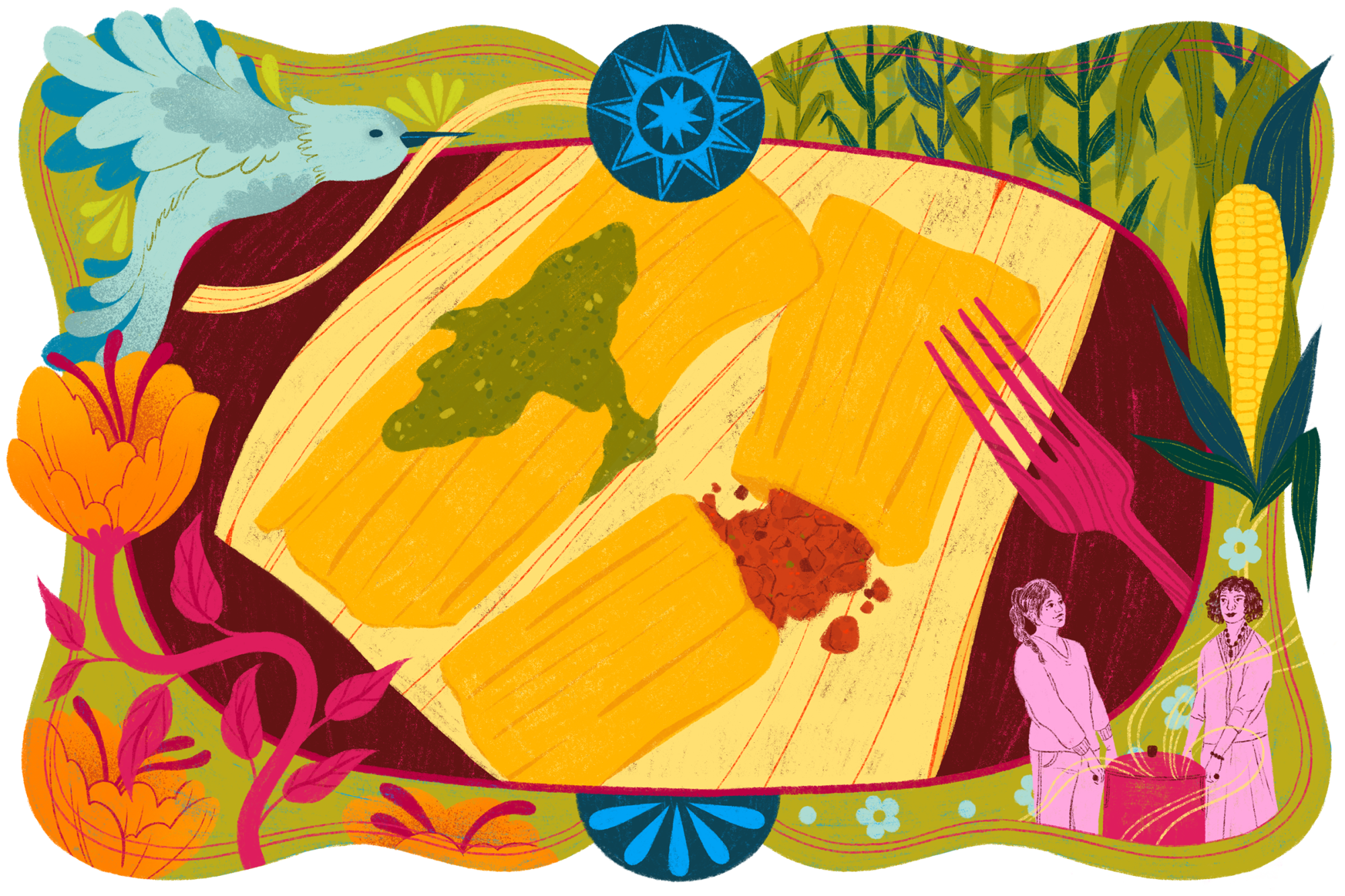
No matter how many years we’ve been making tamales, one of my aunts will tell me I’m doing it wrong. My tamales are too fat, so they won’t steam evenly when it’s time to cook them. Or they are too thin, making the masa brittle and crumbly. My nephews are on an even tighter leash, restricted to making the tamales de dulce, which require only spreading the masa their grandmother has already prepared onto the hoja.
To be fair, my aunts weren’t entirely overreacting to our amateur tamale-making skills. After all, who could forget the year when Karla kneaded the masa with her hands, and her Lee press-on nails ended up in it? She noticed this mishap only after the tamales were done.
We take photos and post them on social media. But as a historian who is accustomed to reading sources, I know that pictures aren’t always an accurate representation of what happens. The pictures are Latinidad-Potemkin: Images of the Latina women Karla and I will never be, the kind who have the skill, patience and time to put their lives on hold for three days to make hundreds of tamales.
But we do recognize the importance of the tradition, even if we are acting. These tamales and the traditions that surround them keep us tethered to one another, and to Mexico, specifically our family in Nayarit. Our moms gather us here in this space every year because that tradition is paramount.
And yet they have not prepared us to carry on the tradition ourselves.
My mother and my aunts were more concerned about their daughters getting an education than learning to cook. They wanted us to have the opportunities they had not had. In my teens and 20s, I’d ask Tia Vicky to teach me how to make some of her signature dishes, like gorditas — a thick corn pocket stuffed with chicken, beef or pork — bathed in a light sauce made from chicken broth, fresh tomato and a little garlic.
“Mija,” she’d answer, “you’re too busy studying. You can learn when you’re done with school.”
But even when I was done with school, there came more school, and work, and family, and somehow I never learned to cook beyond the kind of 30-minute meal for four found in a recipe ripped from a magazine or newspaper. I wouldn’t even know where to start in scaling up to cooking for dozens of people.
So when Tia Vicky makes her annual announcement that this year could be the last, I don’t feel guilty or resentful. Because honestly, it takes a lot of work to make tamales, and that labor is too often taken for granted.
Women (it’s almost always women) spend three days making tamales — shopping for the ingredients, sorting and soaking the hojas in heavy buckets of cold water, preparing the fillings, making the predawn pilgrimage to Amapola Market (yes, that Amapola, home of the 2016 Tamale Apocalypse) in Downey to wait in line, sometimes for hours, to buy the masa.
And then the day of preparation itself. They make 300 to 400 tamales, enough for our whole family to share through the cycle of winter holidays: Noche Buena, New Year’s Eve, Epiphany and Día de la Candelaria. We roll deep for the holidays.
Although the tamales are ready at my aunt’s, she will not release them to us, the hosts, beforehand. She and my uncle, who no longer drive at night, bring them over in an Uber. I always wonder what the driver thinks of these two lilliputian octogenarians lugging a steel pot the size of a small trash can, full of warm tamales.
For Noche Buena, we gather at my house. When I moved back to L.A. from San Diego in 2018 after 18 years, it was declared that I would now be responsible for hosting Christmas Eve, and it never crossed my mind to question it.
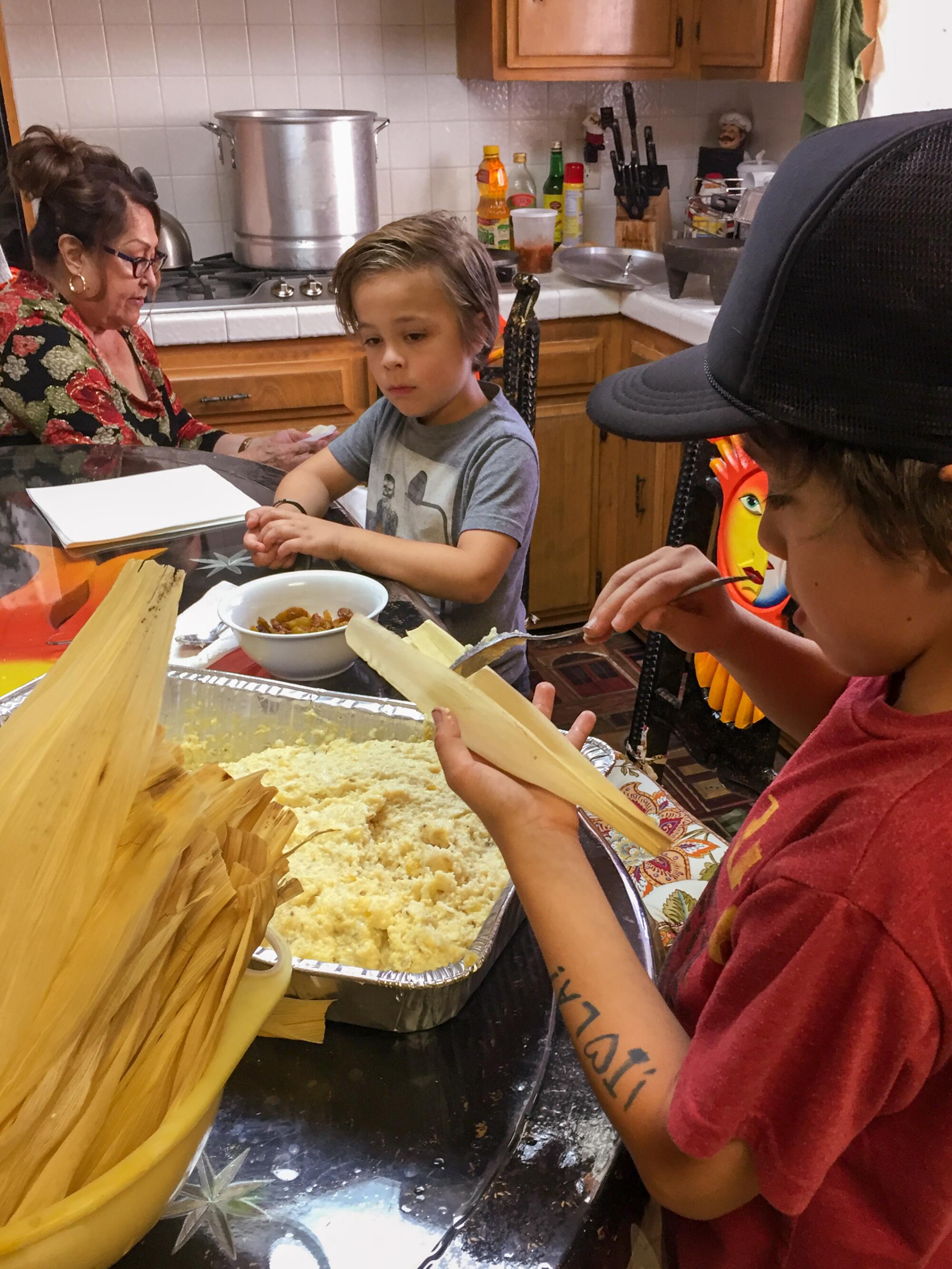
My white American husband prepares his traditional menu of prime rib and all the sides, including the German noodles his Grandma Ethel used to make every holiday. He too has an immigrant tradition, though it may not be easily read as such.
But we always have tamales as well. Even Karla, who doesn’t eat meat, enjoys a pork tamale because tradition trumps vegetarianism. My personal favorite is the rajas with its dense seitan-like cheese, a meaty, chewy delight.
The kids go for the sweet tamales during dinner. The rest of us may reserve them for dessert paired with a cup of champurrado, or wait for the morning when we can split, pan-fry and savor them with leftovers or a fried egg. These tamales taste exactly the same whether we eat them at home in Pasadena, at Tia Vicky’s kitchen table in Echo Park or at my Tia Nelly’s kitchen table in Acaponeta, Nayarit.
So many of our connections with Nayarit are fraying. My Spanish, though my first language, has deteriorated over the years as I speak, read and write more in English. Between cartel violence and the pandemic, plus climate change that makes summers unbearably hot and humid, we simply do not visit Nayarit as much. My mom’s generation is now in its 80s and 90s, which makes travel even harder. These tamales are one of the last vestiges of what makes us feel not just connected but also the same.
So who will keep that connection going and make the tamales once this generation no longer is able? Who can? Who has the time and the skill?
Last Noche Buena, my aunt raised the question once again as we adult women in the family were all sitting around my kitchen table. When my aunt walked away, my nephew Justin’s fiancée, Kassy — a strong self-taught cook with a sense of adventure — spoke up. She’d be happy to make them, she said. My female cousins and I looked at her incredulously. “Are you crazy?” we asked. “You’re 28. You’ll be making them for the next 60 years.”
In part, we were trying to protect her. If she takes on the tamale mantle, she could technically stop whenever she wants, but (like in many families) it’s difficult, especially for women, to step out of a role once you take it on.
But a more profound reason for our shock was that Kassy is Salvadoran American. Her family makes a different kind of tamale: larger and flatter, wrapped in a dark green banana leaf, and spiced with coriander and cloves. Our Nayarit tamales feature pork on the bone and unpitted green olives, and we’ve been eating them for so long that our tongues unconsciously navigate to separate the meat from the bones and pits. Kassy’s tamales are flavorful and moist, but they’re not our tamales.
Justin chimed in, “They’re good. I actually prefer them now.”
“Never tell Tia Vicky that,” I retorted.
It wasn’t that we couldn’t appreciate these delicious tamales; rather, it felt in the moment almost like a rejection of Mexico and our family. If we embrace these other tamales, if our heartstrings back to Nayarit are braided in with other strands, who do we become? Yet isn’t that complex and beautiful and ever-changing braid the essence of tradition?
Tradition isn’t just about holding onto the past — it is a celebration of the way our hearts and families evolve and intertwine to bring in new members and new practices, a chance to love and honor the past even as we welcome change into our lives.
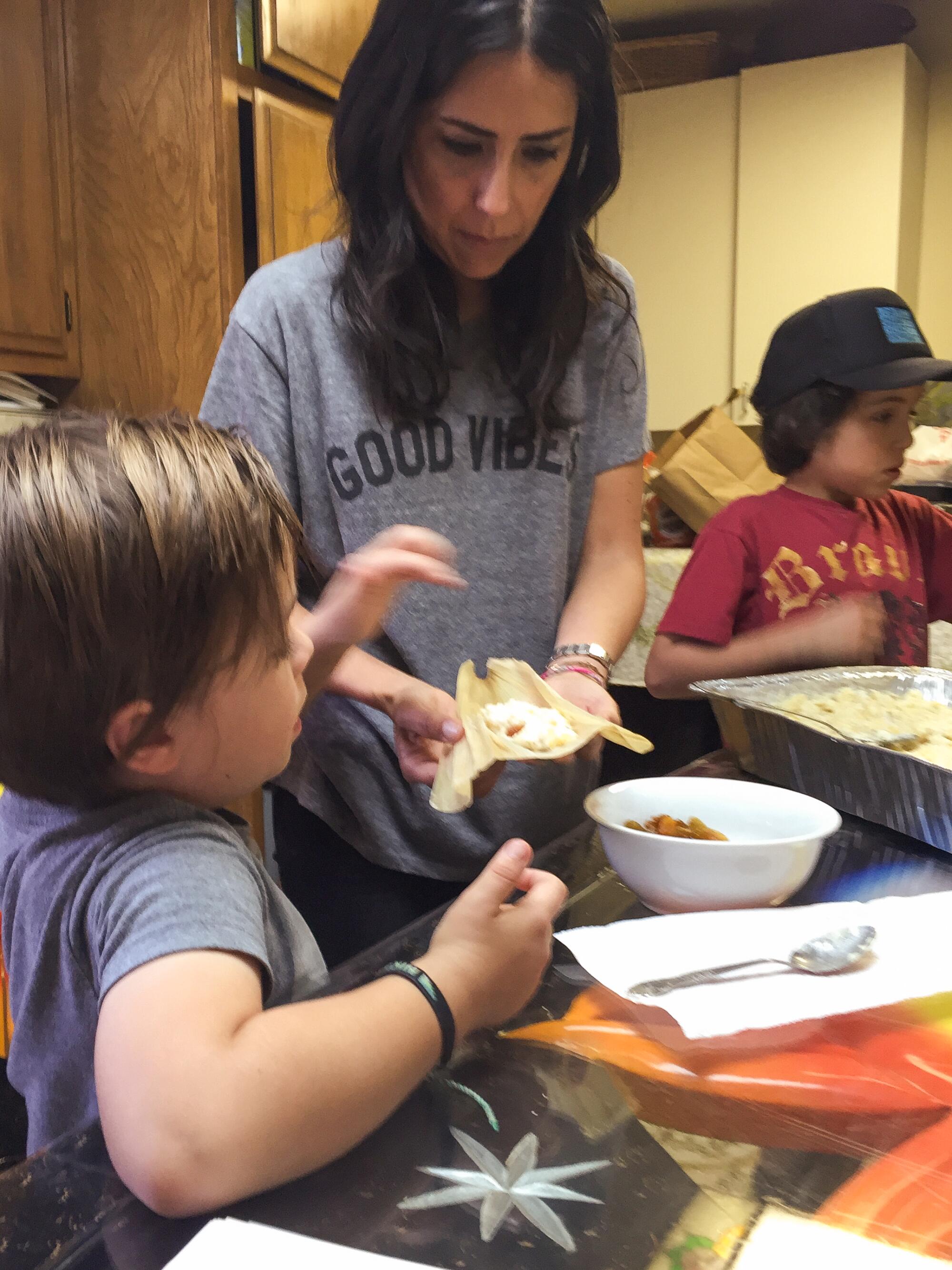
More to Read
Eat your way across L.A.
Get our weekly Tasting Notes newsletter for reviews, news and more.
You may occasionally receive promotional content from the Los Angeles Times.
